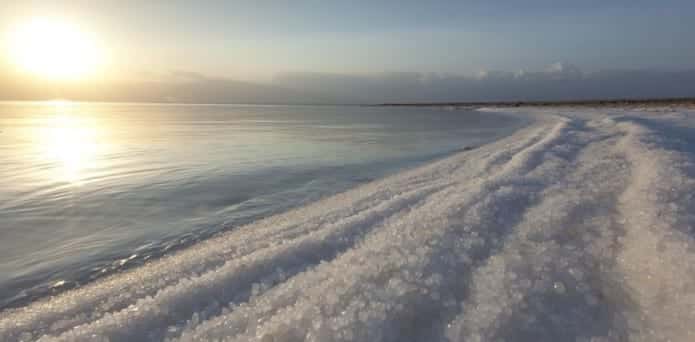Shock and Awe : New shockwave method discovered by MIT engineers to remove salt from flowing seawater
In many parts of the world, the availability of clean and potable water for drinking and agriculture is becoming an importantly urgent matter. To make it usable, researchers are finding new ways to treat salty, brackish or contaminated water.
Engineers the Massachusetts Institute of Technology (MIT) has developed a new and more efficient way to desalinate water using an electric shockwave.
The technique known as ‘shock electrodialysis’ applies an electrically driven shockwave to a constant stream of flowing water. The current interacts with the charged salt particles, causing a stream of salty water to be pushed aside and separated from a stream of fresh water, and these are then funnelled into separate pipes.
The new approach is described in the journal Environmental Science and Technology Letters, in a paper by professor of chemical engineering and mathematics Martin Bazant, graduate student Sven Schlumpberger, undergraduate Nancy Lu, and former postdoc Matthew Suss.
This approach is “a fundamentally new and different separation system,” Bazant says. And unlike most other approaches to desalination or water purification, this one performs a “membraneless separation” of ions and particles, he added.
The new process does not require the use of membrane filters, which can become clogged and degraded over time. Nor does it require water to be boiled, an energy-intensive process, which consumes great amounts of energy.
Traditional desalination technologies, including reverse osmosis and electrodialysis, require barriers to separate out salt’s larger sodium and chlorine atoms. Divided by an electric shockwave, the new technique coaxes water to separate on its own.
“The salt doesn’t have to push through something,” said Bazant. Instead, the ions “just move to one side.”
So engineers at MIT decided to take a whole new approach, and investigated what happens when you mix water and electricity. The salty or contaminated water is fed through a cheap and porous material called a frit, made from tiny glass particles, flexible membranes, and electrodes. As it flows, an electric current is applied to the water, and interacts with the salt content of the water.
When an electric current flows through the system, the salty water divides into regions where the salt concentration is either depleted or enriched. When that current is increased to a certain point, it generates a shockwave between these two zones, sharply dividing the streams and allowing the fresh and salty regions to be separated by a simple physical barrier at the centre of the flow.
“It generates a very strong gradient,” Bazant said.
Even though the technology may eventually be scaled up, as of now, its not ready to compete with larger reverse osmosis and electrodialysis. However, the less complex — downsized and cheaper — setup make it ideal for emergency use, like in the wake of a water quality-compromising storm, or in remote locations.
It could also be used to clean and desalinize waste water generated by fracking. Right now, fracking operators struggle to find safe and effective places to store wastewater.
“The electric fields are pretty high, so we may be able to kill the bacteria,” said Schlumpberger.
In a MIT press release, Maarten Biesheuvel, a principal scientist at the Netherlands Water Technology Institute who was not involved in this research, said that the new work “opens up a whole range of new possibilities for water desalination, both for seawater and brackish water resources, such as groundwater. It will be interesting to see whether the upscaling of this technology, from a single cell to a stack of thousands of cells, can be achieved without undue problems.”

Thanks in favor of sharing such a nice thought, post is nice, thats why i have read it fully|